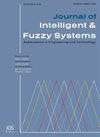基于优化的医疗物联网深度残差网络技术预测视网膜眼底图像中的糖尿病黄斑水肿
IF 1
4区 计算机科学
Q3 COMPUTER SCIENCE, ARTIFICIAL INTELLIGENCE
引用次数: 0
摘要
随着医疗物联网的发展,许多与眼病相关的自动诊断模型变得更加容易。医生可以快速对比和比较视网膜眼底图像。视网膜图像中包含了大量的图像信息。从视网膜图像中检测糖尿病黄斑水肿的任务在医疗系统中是困难的,因为这些图像中的细节非常小。本文提出了一种基于医疗物联网的糖尿病黄斑水肿视网膜眼底图像预测模型。在医疗物联网背景下,基于改进的深度残差网络与特征金字塔网络相结合,检测视网膜眼底图像中糖尿病黄斑水肿的方法称为DMER (Diabetic Macular Edema in Retina fundus images)。DMER方法包括以下几个阶段:(i)利用改进的ResNet101结合特征金字塔网络提取图像的特征,得到这些特征的映射;(ii)寻找潜在异常的区域建议网络;(3)用回归法将预测边界框与真实边界框对比,证明黄斑水肿的能力。MESSIDOR和DIARETDB1数据集用于测试评估标准,如敏感性、特异性和准确性。DMER方法在MESSIDOR数据集和DIARETDB1数据集上的准确率分别为98.08%和98.92%。对于上述数据集,DMER方法的结果优于目前其他方法的结果。本文章由计算机程序翻译,如有差异,请以英文原文为准。
Predicting diabetic macular edema in retina fundus images based on optimized deep residual network techniques on medical internet of things
With the medical internet of things, many automated diagnostic models related to eye diseases are easier. The doctors could quickly contrast and compare retina fundus images. The retina image contains a lot of information in the image. The task of detecting diabetic macular edema from retinal images in the healthcare system is difficult because the details in these images are very small. This paper proposed the new model based on the medical internet of things for predicting diabetic macular edema in retina fundus images. The method called DMER (Diabetic Macular Edema in Retina fundus images) to detect diabetic macular edema in retina fundus images based on improving deep residual network being combined with feature pyramid network in the context of the medical internet of things. The DMER method includes the following stages: (i) ResNet101 improved combining with feature pyramid network is used to extract features of the image and obtain the map of these features; (ii) a region proposal network to look for potential anomalies; and (iii) the predicted bounding boxes against the true bounding box by the regression method to certify the capability of macular edema. The MESSIDOR and DIARETDB1 datasets are used for testing with evaluation criteria such as sensitivity, specificity, and accuracy. The accuracy of the DMER method is about 98.08% with MESSIDOR dataset and 98.92% with DIARETDB1 dataset. The results of the method DMER are better than those of the other methods up to the present time with the above datasets.
求助全文
通过发布文献求助,成功后即可免费获取论文全文。
去求助
来源期刊

Journal of Intelligent & Fuzzy Systems
工程技术-计算机:人工智能
CiteScore
3.40
自引率
10.00%
发文量
965
审稿时长
5.1 months
期刊介绍:
The purpose of the Journal of Intelligent & Fuzzy Systems: Applications in Engineering and Technology is to foster advancements of knowledge and help disseminate results concerning recent applications and case studies in the areas of fuzzy logic, intelligent systems, and web-based applications among working professionals and professionals in education and research, covering a broad cross-section of technical disciplines.
 求助内容:
求助内容: 应助结果提醒方式:
应助结果提醒方式:


